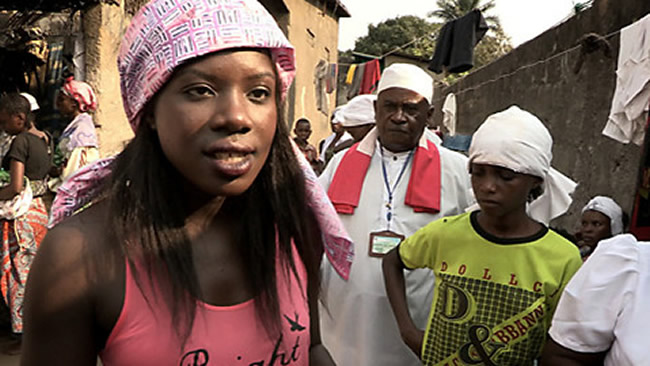Branded A Witch: The church that purges bed wetters of evil
RELIGIOUS fundamentalism is not refined to any one group. It’s a human condition. A group should not always be defined by the most awful thing ever done by one its members. But it should be able to explain itself. Here, Richard Bartholomew looks at the BBC Three show Branded a Witch, in which young British mother of Congolese heritage named Kevani Kanda visited Congo to see the consequences of child-witch accusations in the country.
The statistics are grim: 50,000 children held in churches for abusive “deliverance” sessions, and 20,000 living in the streets after being thrown out by relatives who believe that they are the cause of misfortune or ill-health. As the programme notes, the problem is the result of years of chaos and conflict in the country, which have led to the distortion of traditional beliefs.
The film included visits to two churches in Kinshasa where children are accused of witchcraft and subjected to “deliverance”; at the first, the pastor explained how he chooses which children are witches, and he introduced a teenage-aged girl – obviously traumatised and unable to speak – who he explained had eaten her mother:
These two children have bad works inside them. The Holy Spirit has revealed that these kids have been possessed by witchcraft. Others haven’t eaten anyone yet, but this one, she ate her mother. The Spirit is like the wind, it is not something you can see.
One boy at the church explained that deliverance had cured him of bed-wetting.
At another church, a five-year-old boy is subjected to a distressing ordeal to remove a “witchcraft telephone” from inside him, by which he supposedly communicates with other witches: the crying and terrified boy, standing before a group of women, is repeatedly smacked, force-fed hot palm oil, starved for three days, and given a palm-oil enema and then not allowed to relieve himself. According to the female pastor:
It’s going to be like that because when you are hitting him like this, his going to feel pain because the thing that has been placed in him is being removed and when it’s being removed he has to feel pain, because it’s a foreign object in his body. So of course he will cry. The Holy Spirit will look at him and see he really has witchcraft, that he has already started killing people and he has started drinking people’s blood.
Accusing a child in this way is actually illegal in Congo now, but the pastor is unconcerned:
I am not afraid of anything. I don’t think God would let someone come and arrest me.
Ten to twelve children are brought to the church for such treatment each week.
Neither church was identified in the programme, although both appeared to be small and ramshackle. Church members wore distinctive items of clothing; at the first, a while sash marked with red crosses, and at the second, white dresses with gold trimmings and blue head-scarves. There did not appear to be any connection to wider neo-Pentecostal networks.
Kanda also spoke to the victims of witchcraft accusations: they included a teenage girl who had gone to primary school in London but had been sent back to Congo by relatives; two young children who had been badly burnt by a relative, and were now living in a hostel for accused children; and her own cousin, who had been cast out by her family – Kanda expressed frustration with her relatives’ deep belief in witchcraft and their willingness to disown an “infected” family member.
It’s not just in the Congo. The cases of Victoria Climbié and Kristy Bamu, tortured for days by his sister’s lover before he died of his injuries, were linked to kindoki.
Posted: 27th, May 2013 | In: TV & Radio Comment | TrackBack | Permalink



